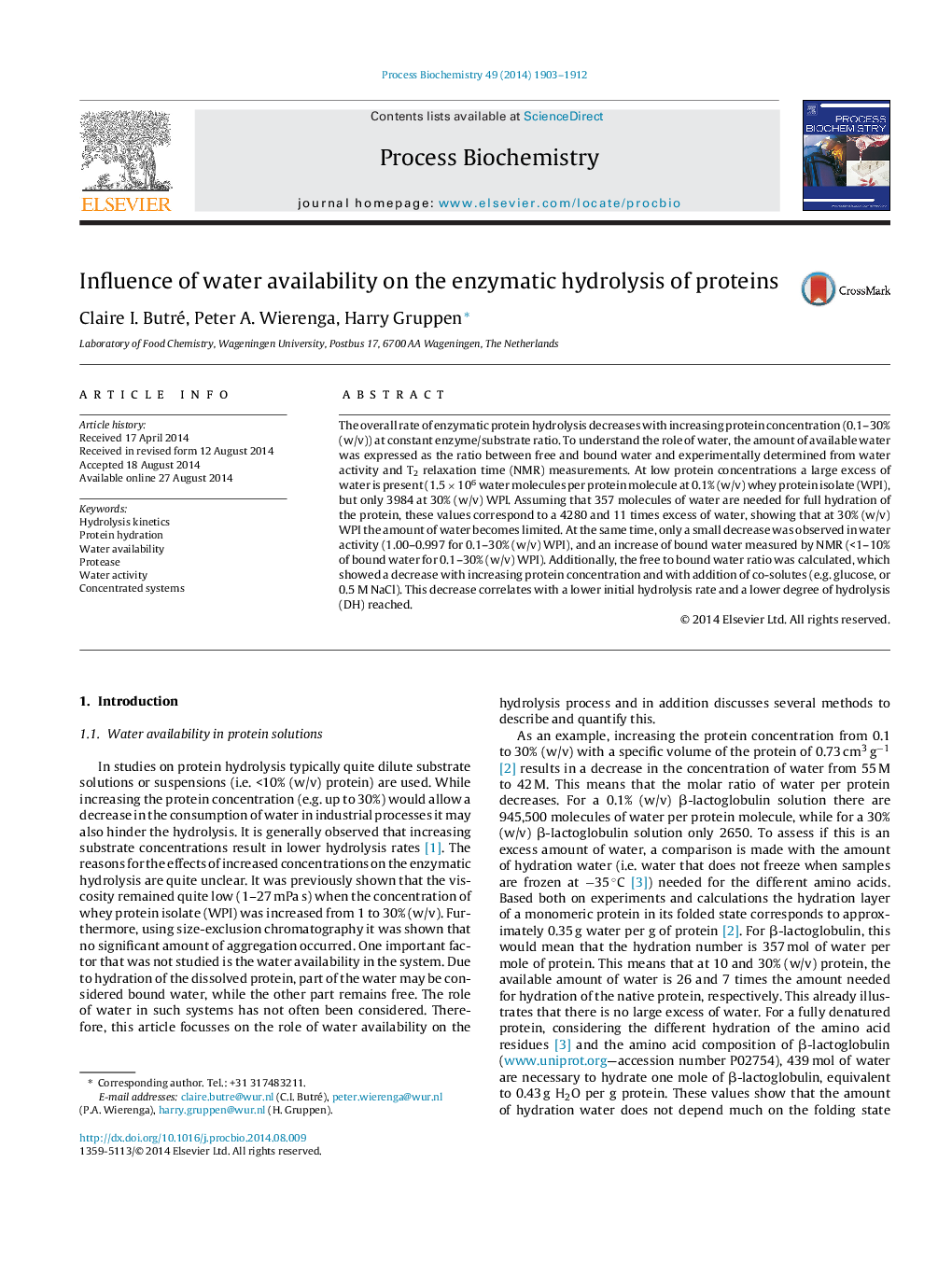| Article ID | Journal | Published Year | Pages | File Type |
|---|---|---|---|---|
| 34449 | Process Biochemistry | 2014 | 10 Pages |
•Increasing protein concentration leads to slower hydrolysis at constant enzyme/substrate ratio.•Increasing protein concentration results in decreasing water availability.•Changes in water availability are linearly correlated to water activity measurements.•The decrease in free: bound water ratio correlates with slower hydrolysis.
The overall rate of enzymatic protein hydrolysis decreases with increasing protein concentration (0.1–30% (w/v)) at constant enzyme/substrate ratio. To understand the role of water, the amount of available water was expressed as the ratio between free and bound water and experimentally determined from water activity and T2 relaxation time (NMR) measurements. At low protein concentrations a large excess of water is present (1.5 × 106 water molecules per protein molecule at 0.1% (w/v) whey protein isolate (WPI), but only 3984 at 30% (w/v) WPI. Assuming that 357 molecules of water are needed for full hydration of the protein, these values correspond to a 4280 and 11 times excess of water, showing that at 30% (w/v) WPI the amount of water becomes limited. At the same time, only a small decrease was observed in water activity (1.00–0.997 for 0.1–30% (w/v) WPI), and an increase of bound water measured by NMR (<1–10% of bound water for 0.1–30% (w/v) WPI). Additionally, the free to bound water ratio was calculated, which showed a decrease with increasing protein concentration and with addition of co-solutes (e.g. glucose, or 0.5 M NaCl). This decrease correlates with a lower initial hydrolysis rate and a lower degree of hydrolysis (DH) reached.
